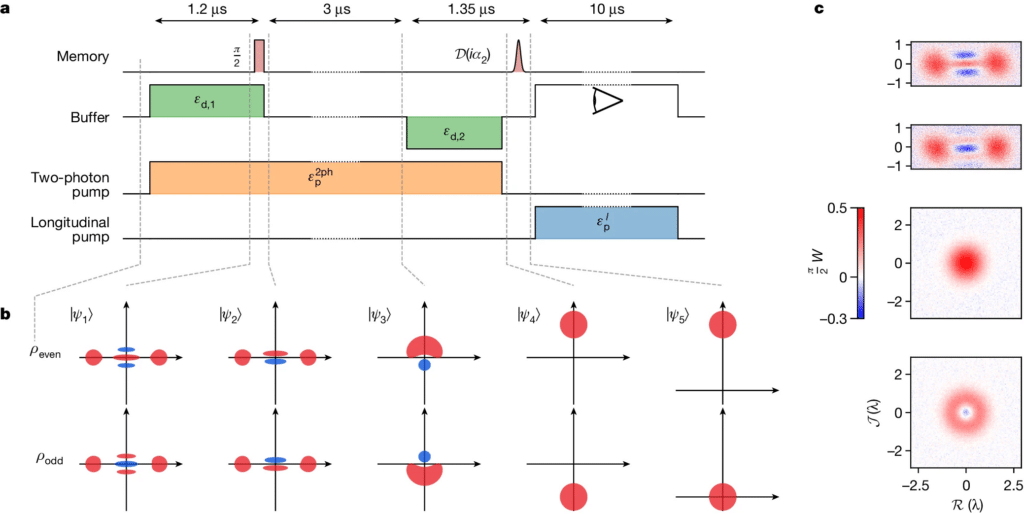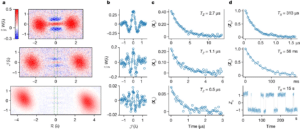Prolonged control of cat qubits: a breakthrough in quantum computing published in “Nature”


Quantum tomography protocol based on the holonomic gate.
In quantum computing, the “qubit” is the equivalent of the “bit” in classical computing, a “bit” representing the most elementary unit of data, which can be either a 0 or a 1. A bit flip, or bit-flip, therefore refers to the involuntary change of a bit’s value from 0 to 1 or vice versa. This seemingly innocuous event can have far-reaching implications, particularly in systems where precision is paramount.
In quantum computing, qubits are therefore the basic units of information, and their stability is crucial to the proper functioning of quantum systems. However, qubits are notoriously sensitive to environmental interference, leading to errors in calculations. To overcome this problem, scientists have developed protected qubits, of which the cat qubit is a particularly promising example.

Phase-flip and bit-flip time measurements for cat qubits.
The “cat qubit” owes its curious name to its unique quantum behavior. Unlike conventional qubits, which are often prone to computational errors, cat qubits are intrinsically protected against certain forms of error. Indeed, a cat qubit is the encoding of a qubit in a quantum state composed of two diametrically opposed conditions at the same time, thus putting it in the quantum state of Schrödinger’s famous cat. The use of cat qubits makes it possible to limit the error rate inherent in conventional quantum computers, offering a promising solution for the quantum technologies of the future.
In this study, the researchers took the decisive step of controlling a cat qubit for more than 10 seconds. This achievement is based on the use of two-photon dissipation, a phenomenon that stabilizes quantum states while enabling their manipulation. Two-photon dissipation involves the simultaneous absorption of two photons of the same or different frequencies, with the aim of exciting a molecule in a given state (usually the ground state) to a higher-energy electronic state. By controlling the phase of quantum superpositions without compromising error protection, the researchers have demonstrated the viability of this approach for future quantum technologies.
This breakthrough heralds the development of numerous research topics and applications in the field of quantum computing. By enabling extended bit-flip times and precise qubit control, this breakthrough could lead to the creation of more reliable, high-performance quantum systems. From cryptography to the simulation of molecules and the optimization of artificial intelligence, the potential applications of this technology are vast and revolutionary.
Find out more:
Article “Quantum control of a cat qubit with bit-flip times exceeding ten seconds” – Nature (2024).

Teams, Zoom, Microsoft 365, Slack, Drive, Dropbox and so many other videoconferencing systems, professional messaging systems or document sharing and ...